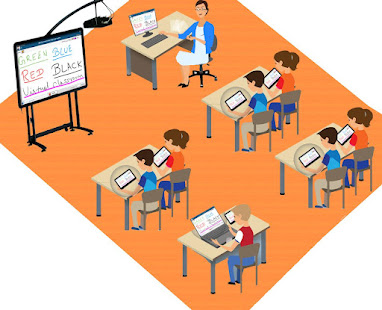A Collaborate Classroom: What Can Padlet Do?
This blog is a "serious" evaluation post (joke 😜). But I will indeed introduce a very useful collaboration tool - Padlet. On this platform, teachers can organize a virtual classroom!
✨ ✨ ✨ What Is Padlet?
Padlet is an online virtual bulletin board where the teachers and students can freely share their ideas (text, image, video, document, GIFs, etc. ). Everyone can check others' sharing and makes comments, so users can work collaboratively. It is never minded that you want to remain mysterious because you can choose to post content or leave comments anonymously!
It is very convenient to use this tool. It has webpage and app versions, and students can access using their phones, computers or other electronic devices. Moreover, it is free for use. As a teacher, the basic version provides more than enough functionality for your teaching needs. The free version allows for three Padlets, but upgrading won't break the bank if you want to use it consistently! A paid upgrade offers features specific to educators' needs, including unlimited Padlets, more upload space, folders, and priority support.
Teachers can add moderators and turn on comments and voting features for more collaboration. In China, there may be some controls and demands on speech. Or, if your students are younger. As added checks against inappropriate content, moderators can turn on profanity filters, screening all posts before making them visible.
Finally, it is very exciting that in China, you don't need to use VPN to access it! 👏
✨ ✨ ✨ How To Use It?
👉 Step-by-step version
Step 1: Go to padlet.com and create an account.
Step 2: Create a new Padlet wall by clicking on Create New Padlet.
Step 3: Start working on your Padlet wall by clicking Modify This Wall. Place the team’s project Title and a small Description about the project into appropriate places.
Step 4: Change the Wallpaper and Layout on the Modify This Wall page. Add a preset or customized wallpaper and change the layout to stream, grid, or freeform.
👉 Upgraded version
1. Ice breaking. At the beginning of the course, teachers can create an "introduction wall" and invite students to introduce themselves with text, pictures or videos. Of course, the teacher can take the lead in making a demonstration, and go through these introductions together in the first class.
2. Brainstorming. Teachers can quickly set up a topic-based Padlet wall so that students can contribute and share their ideas in a timely manner. This brainstorming wall can also be saved and revisted.


Comments
Post a Comment